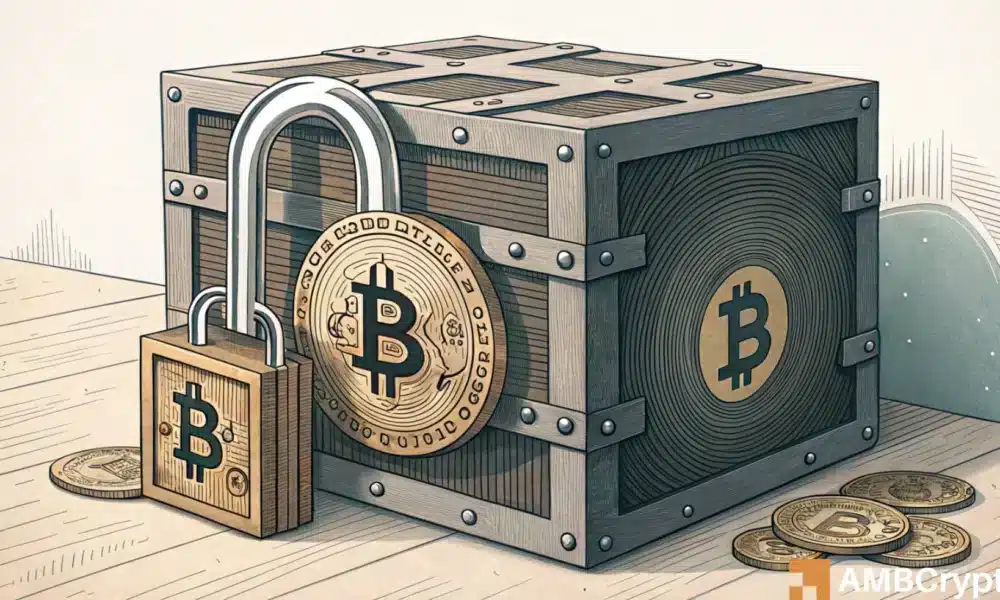The Implications of Bitcoin’s Halving Schedule on Its Scarcity and Price Projection
Bitcoin (BTC) has emerged as a dominant player in the world of digital currencies, not only because of its decentralized nature but also due to its strict supply limitations. The cryptocurrency is capped at 21 million coins, creating a framework that stands in stark contrast to fiat currencies, which governments can print without bounds. As Bitcoin continues to establish itself, understanding the implications of its halving schedule is crucial. This article explores how the upcoming Bitcoin halving could enhance scarcity, subsequently influencing demand and price.
Understanding Bitcoin’s Supply Dynamics
One of Bitcoin’s most significant characteristics is its finite supply. Unlike traditional currencies that experience inflation due to unlimited printing, Bitcoin’s issuance is meticulously programmed. The cryptocurrency operates on a block system, whereby miners are rewarded for validating transactions. Currently, each mined block rewards miners with 6.25 BTC, a figure that gets halved every 210,000 blocks, or approximately every four years. This mechanism ensures that Bitcoin’s supply diminishes over time, amplifying its scarcity and perceived value.
According to analytics firm Glassnode, Bitcoin has successfully mined 900,000 blocks since its inception, leading to an ever-expanding supply, albeit moderated by the halving process. With each halving, the amount of new Bitcoin introduced into circulation is significantly reduced, slowing the rate at which the total supply grows. This programmed scarcity creates a compelling case for future price appreciation as demand potentially outstrips supply.
The Countdown to Scarcity
The concept of scarcity is crucial for any valuable asset, and with Bitcoin’s next halving anticipated to occur at block height 1,050,000 in 2028, market dynamics are primed for change. After the upcoming halving, block rewards will drop to 3.125 BTC, translating to a daily issuance of 450 BTC, nearly half of the current issuance. This drastic reduction emphasizes the rapid approach to the 21 million coin cap, making the available supply increasingly scarce.
Given the increasing adoption and interest in Bitcoin among institutional investors and the general public, this diminishing issuance could result in upward pricing pressure. As the amount of new Bitcoin entering the market dwindles, the potential for substantial price increases becomes more pronounced.
The Remaining Supply: A Closer Look
Currently, there are 1.7 million Bitcoins left to be mined before reaching the total supply limit. This remaining supply will continue to diminish rapidly as miners adapt to the new block rewards. The implications are significant: fewer new Bitcoins will be available, while demand is expected to rise. Furthermore, a significant portion of the existing supply is already held by a small number of wallets.
Recent analyses have shown that the top eight Bitcoin wallets hold approximately 4.51 million BTC, representing over 21% of the total supply. These holders effectively remove a large amount of Bitcoin from circulation, tightening the market even further. This supply squeeze illustrates the interplay between holders and miners, creating a scenario where market dynamics favor price appreciation.
Price Projections in a Tightening Market
As the Bitcoin market evolves, projections for its price become increasingly optimistic. Should demand continue to surge and Bitcoin’s market capitalization rise to $3 trillion or even $5 trillion, estimates suggest the price of a single BTC could reach staggering heights, from $143,000 to $238,000 or higher. These figures, while speculative, emphasize the potential for dramatic price increases in a changing market dynamic.
The underlying mechanics of Bitcoin—as a finite resource combined with growing demand—position it much like an auction with no reserve price, raising questions about how high prices could ultimately ascend. In this context, Bitcoin’s unique qualities further solidify its reputation as “digital gold,” setting the stage for future gains.
The Road Ahead for Bitcoin
In summary, the upcoming Bitcoin halving is more than just a technical event; it represents a pivotal moment that could dramatically affect supply dynamics and price trajectories. As Bitcoin moves closer to its supply limit, the implications for scarcity and value grow stronger. With more and more institutional players entering the space, coupled with a decreasing flow of new coins, Bitcoin’s narrative as a store of value is only solidifying.
Ultimately, the intricate relationship between supply, demand, and market psychology suggests that Bitcoin is on a trajectory for increasing appreciation. As the cryptocurrency community continues to grapple with evolving market conditions, the anticipation surrounding future halvings serves as a reminder of Bitcoin’s unique position in the financial landscape. With increased investor interest and institutional buy-in, the golden age of Bitcoin is just beginning.


